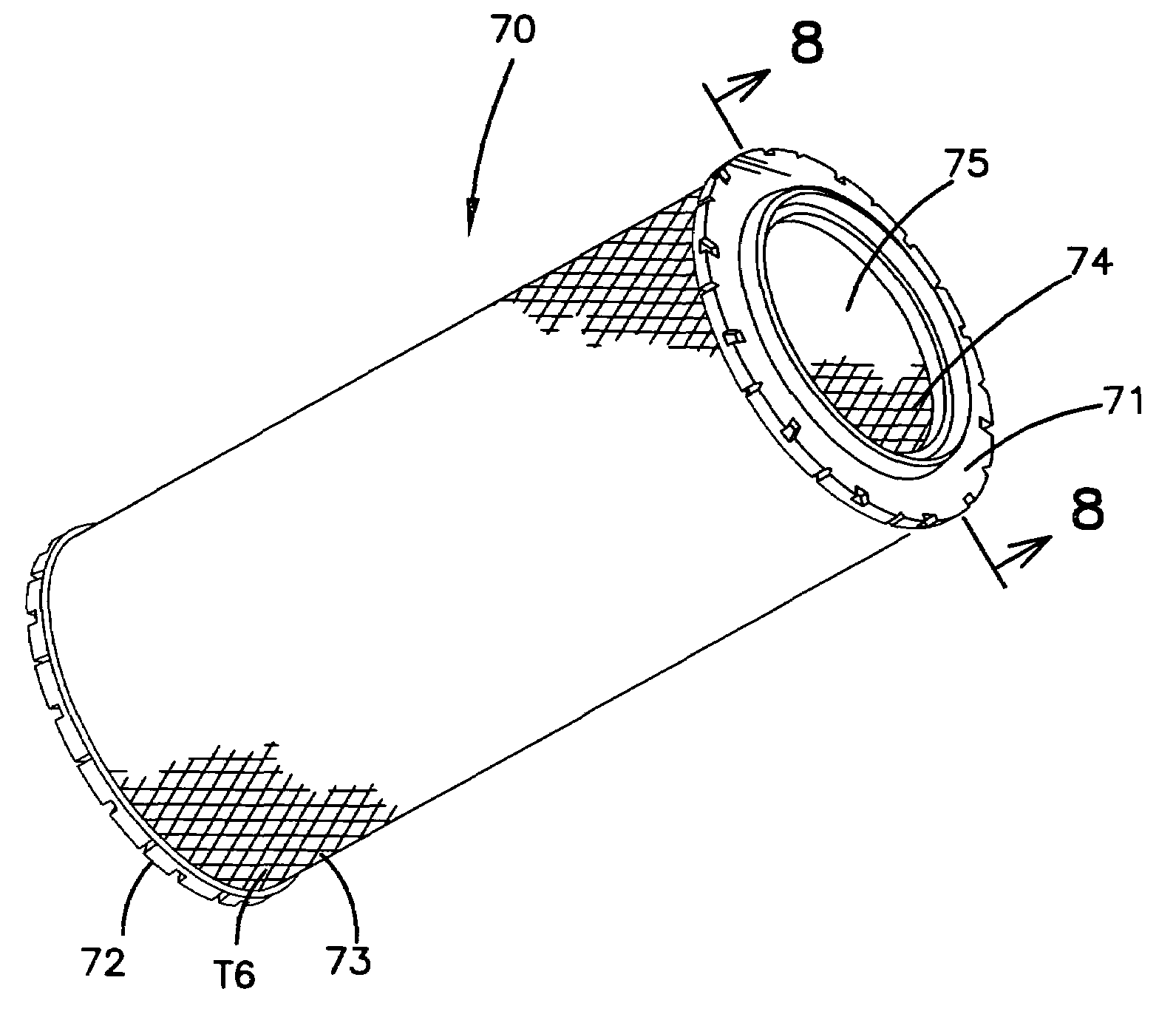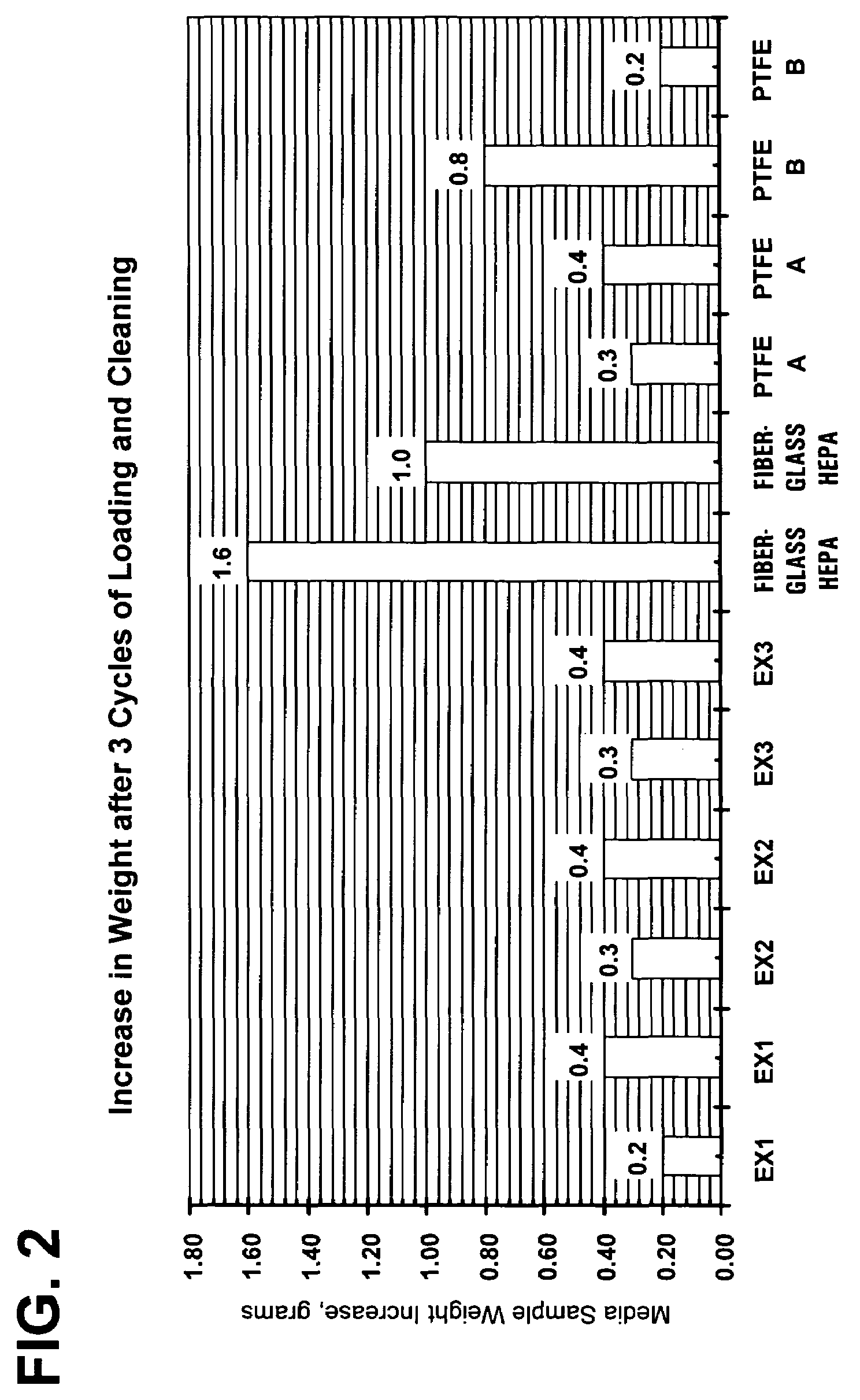Cleanable high efficiency filter media structure and applications for use
a filter media and high-efficiency technology, applied in the direction of suction cleaners, electrostatic separation, chemical/physical processes, etc., can solve the problems of reducing vacuum power, affecting the efficiency of cleaning, and affecting the efficiency of cleaning, and achieves excellent filtering, high particle capture, and the effect of reducing the flow restriction
- Summary
- Abstract
- Description
- Claims
- Application Information
AI Technical Summary
Benefits of technology
Problems solved by technology
Method used
Image
Examples
example 1
[0255]A glass fiber filter medium having a basis weight of 59 lb-3000 ft−2 and a thickness of 0.013 inch was combined with two layers of a spun bonded polyester scrim material. One layer of the scrim was laminated to either side of the glass fiber filter medium sheet. The polyester scrim had a thickness of 0.007 inches and a basis weight of 0.5 oz-yd−2. The three layer substrate had an air flow resistance of 39 millimeters of water at a flow rate of 10.5 ft-min−1 air velocity. The substrate had an efficiency (DOP) of 99.97% at 10.5 ft-min−1 air velocity. The substrate material was then combined with an electrospun nanofiber layer. The polyamide nanofiber layer had a 40% efficiency when tested according to ASTM 1215 and had a basis weight of about 0.1 gm-m−2.
example 2
[0256]Example 1 was repeated except that the nanofiber layer had a 70% efficiency when tested under ASTM 1215 and had a basis weight of about 0.2 gm-m−2.
example 3
[0257]Example 1 was repeated except that the nanofiber layer had a 95% efficiency when tested under ASTM 1215 having a basis weight of about 0.3 gm-m2.
[0258]The media described in Examples 1–3 were tested in a flat sheet configuration, in an experiment to test its filtration properties including its pressure drop, dust and dirt loading capacity, and cleaning properties. These parameters were measured by first weighing the flat panel media sample, placing the flat panel media sample into a duct wherein the media is exposed to an air flow of 10 ft-min and a load of ASHRAE dust at a rate of about 1.03 gm-min. The apparatus is run until the pressure drop across the media is 30 inches of water. The media is then removed from the duct and weighed to note dust loading. The media is then clamped into a frame and the frame apparatus was inverted over a dust bin. Some dust fell off immediately, the frame was tapped gently with a screwdriver until dust stopped falling from the media. The media...
PUM
| Property | Measurement | Unit |
|---|---|---|
| Temperature | aaaaa | aaaaa |
| Temperature | aaaaa | aaaaa |
| Temperature | aaaaa | aaaaa |
Abstract
Description
Claims
Application Information
 Login to View More
Login to View More - R&D
- Intellectual Property
- Life Sciences
- Materials
- Tech Scout
- Unparalleled Data Quality
- Higher Quality Content
- 60% Fewer Hallucinations
Browse by: Latest US Patents, China's latest patents, Technical Efficacy Thesaurus, Application Domain, Technology Topic, Popular Technical Reports.
© 2025 PatSnap. All rights reserved.Legal|Privacy policy|Modern Slavery Act Transparency Statement|Sitemap|About US| Contact US: help@patsnap.com



